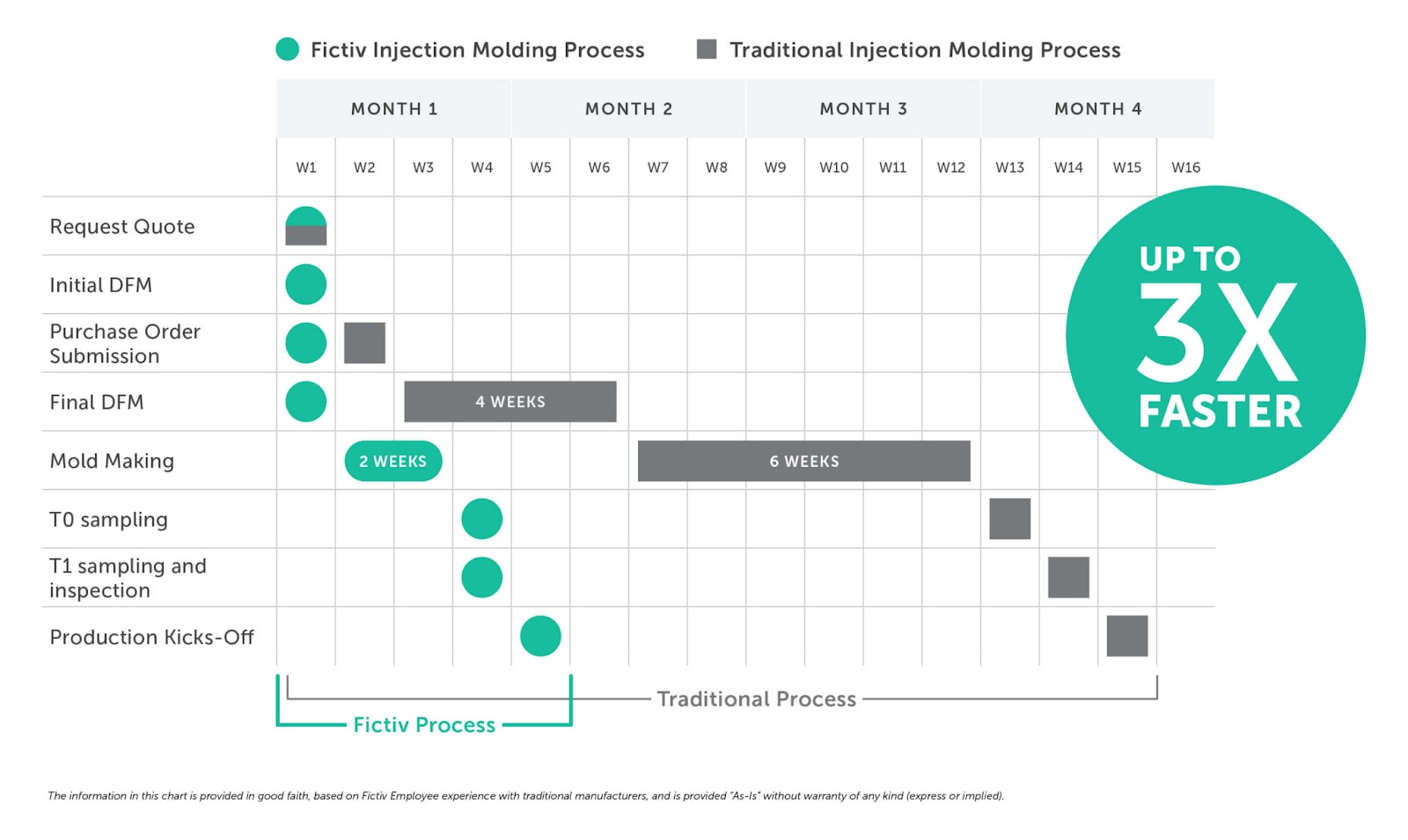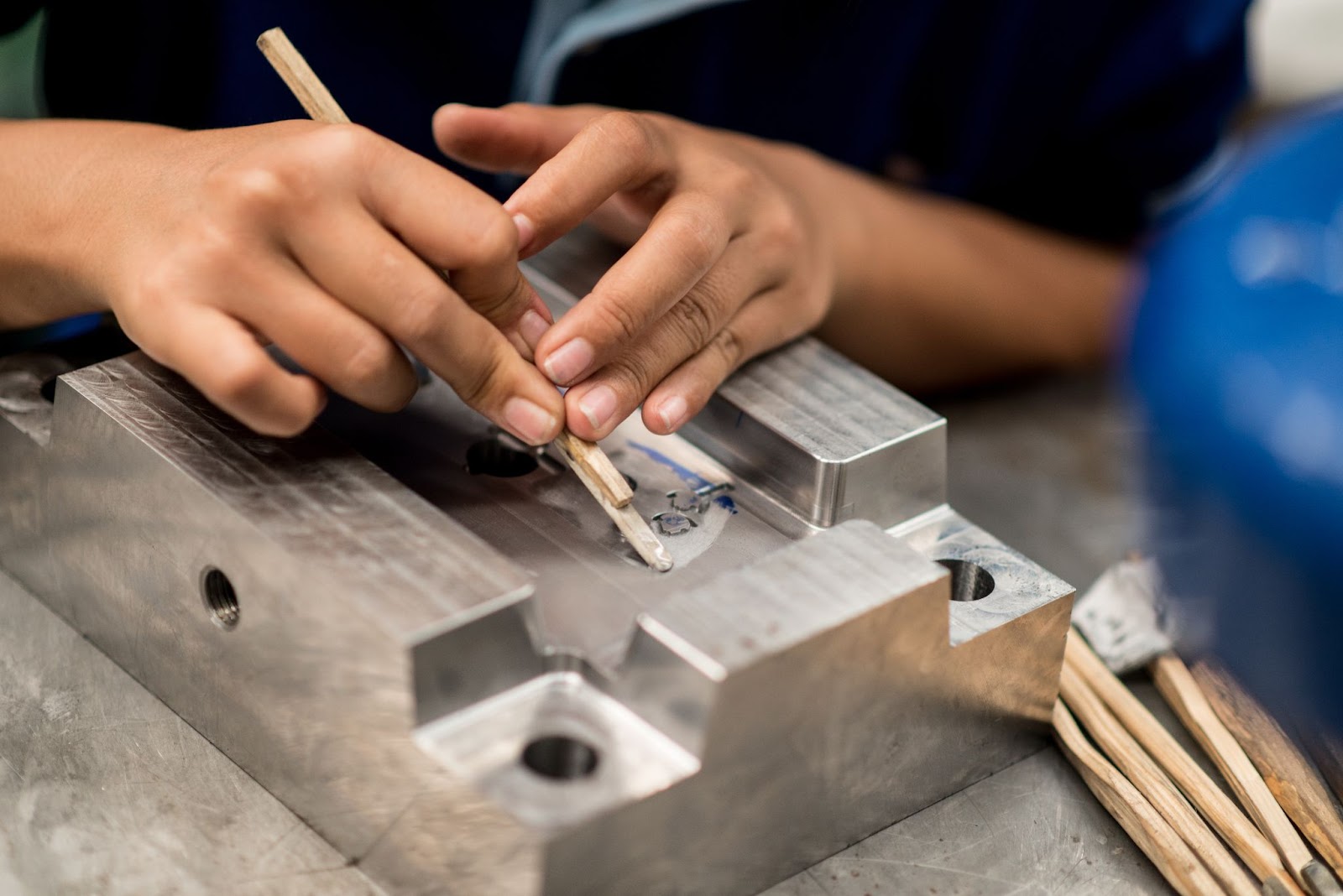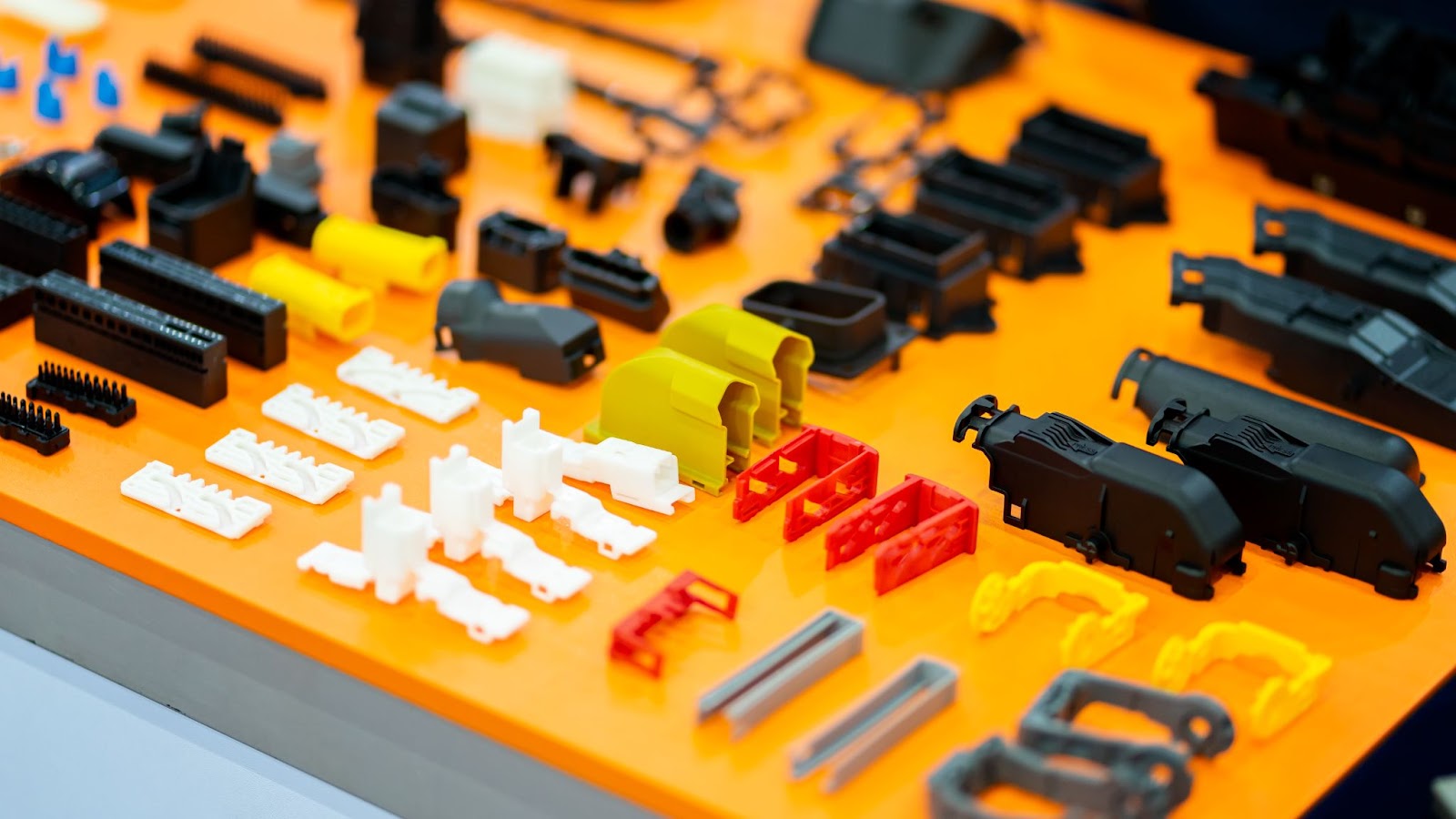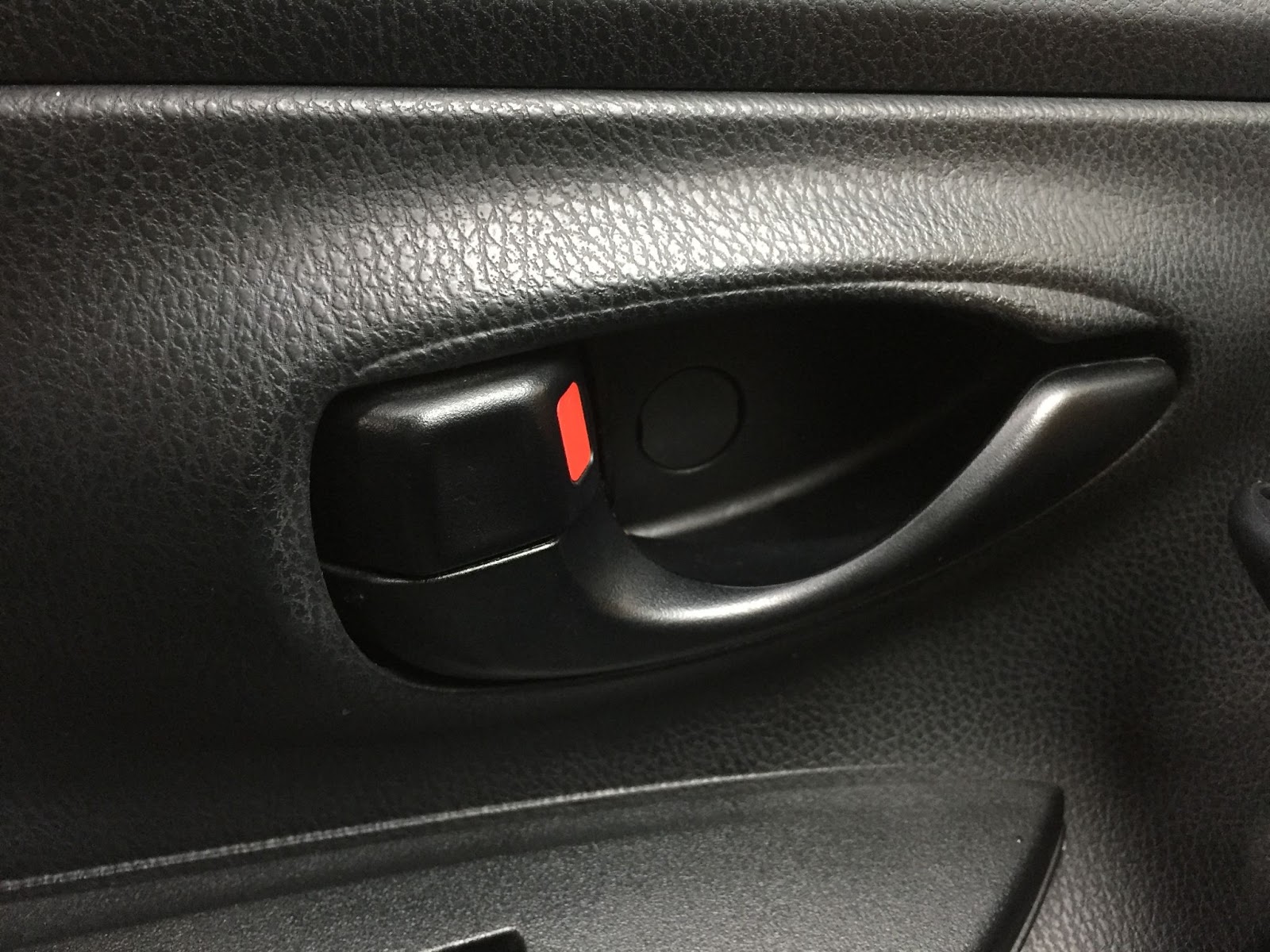Time to read: 5 min
SPI guidelines provide injection molders and product designers with a standard way to describe the surface finish of molded plastic parts. These guidelines were defined by the Society of the Plastics Industry (SPI), a U.S.-based trade association that’s now known as the Plastics Industry Association (PIA, or PLASTICS). By providing a “common language” for surface finishes, SPI standards make it easier for you to ask for and receive injection molded parts with a specific polish or texture.
Why Mold Finish Matters
If you’re wondering why mold finish deserves its own “language,” consider how injection molded parts are made and the diverse requirements that they need to meet. Most injection molds are machined from aluminum or steel. The end mills that are used leave behind tool marks, surface imperfections that can be transferred from the mold cavity to the molded part. Improving the cavity finish improves part finish and helps to meet application-specific requirements for visual appeal and functionality.
In general, the type of product that you’re designing determines your choices for a mold finish. For example, optical lenses need a highly-polished finish that is free from defects (such as scratches) that could interfere with their use. Keyboard keys don’t need this same finish, and neither do shop vacs or steering wheels. For products that make contact with fingertips or that are designed to be handheld, there are advantages to a dull finish that hides fingerprints or a textured finish that won’t slip.

Mold Polishing and Mold Texturing
Applying any type of a polished or textured finish adds costs to molds, so product designers need to choose SPI standards with care. In general, mold finishes that take longer to produce cost more. Surface finishes that use more expensive abrasives or more complex finishing processes also increase tooling costs. Plus, you may want to consider that there are three non-SPI mold finish standards: MT (Moldtech), VDI (Verein Deutscher Ingenieure), and YS (Yick Sang).
Because mold finish is important to the success of your project, it helps to get design for manufacturing (DFM) feedback and expert assistance from prototyping through production. Ficitv can help you to select the best injection mold surface finish and works with a global network of manufacturing partners who can achieve various finishing options. Keep reading to learn more about SPI finishes, or create an account to get an injection molding quote today.

SPI Surface Finish Standards
SPI guidelines define twelve standards for injection mold finish, each with an alphanumeric identifier that begins with the letter A, B, C, or D and ends with the number 1, 2, 3, or 4. Sometimes, you’ll see a dash between letters and numbers. For each alphanumeric SPI standard, there’s a finishing method and surface roughness average (RA). Finishing methods use specific types of diamond abrasive, grit paper, stone abrasive, or dry blasting. RA is measured in micrometers (µm) and given as a range of values.
Importantly, SPI standards can be divided into four grades: glossy (A), semi-glossy (B), matte (C), and textured (D). There are three SPI callouts within each of these four grades, and all twelve SPI callouts have different attributes. Diamond abrasive is used to achieve a glossy finish, grit polish paper for a semi-glossy finish, stone abrasive for a matte finish, and dry blasting for a textured finish.
This mold level chart describes all twelve SPI surface finishes, including the finishing method and typical surface roughness.
| SPI Standard | Finish (Grade) | Finish(Type) | Finishing Method | Typical Surface Roughness |
| A-1 | Glossy | Super | Grade #3, 6000-Grit Diamond | 0.012 to 0.025 |
| A-2 | Glossy | High | Grade #6, 3000-Grit Diamond | 0.025 to 0.05 |
| A-3 | Glossy | Normal | Grade #15, 1200-Grit Diamond | 0.05 to 0.10 |
| B-1 | Semi-Glossy | Fine | 600-Grit Paper | 0.05 to 0.10 |
| B-2 | Semi-Glossy | Medium | 400-Grit Paper | 0.10 to 0.15 |
| B-3 | Semi-Glossy | Normal | 320-Grit Paper | 0.28 to 0.32 |
| C-1 | Matte | Fine | 600-Grit Stone | 0.35 to 0.40 |
| C-2 | Matte | Medium | 400-Grit Stone | 0.45 to 0.55 |
| C-3 | Matte | Normal | 320-Grit Stone | 0.63 to 0.70 |
| D-1 | Textured | Satin | Dry Blast Glass Bead #11 | 0.80 to 1.00 |
| D-2 | Textured | Dull | Dry Blast #240 Aluminum Oxide | 1.00 to 2.80 |
| D-3 | Textured | Rough | Dry Blast #24 Aluminum Oxide | 3.20 to 18.0 |
For injection molds that do not need one of these surface finishes, the SPI standard specifies an as-machined finish with a typical surface roughness of 3.20 RA and visible machining marks.

SPI Standards and Injection Molding Materials
Now that you know the basics of SPI guidelines for surface finishing, it’s time to think about injection molding materials. For designers, it’s essential to understand that SPI mold finishes produce different results depending on the injection molded plastic that you choose. In other words, the material that your parts are made of determines the type of results you can expect from a polished or textured mold.
The following sections explain what to expect if you specify a glossy, semi-glossy, matte, or textured SPI finish for your injection molded plastic parts. You’ll also find tables for some common injection molding materials and a few application examples.
Glossy Finishes for High Polish Parts
SPI glossy finishes are very shiny. Typically, they’re used with highly polished parts such as optical lenses, mirrors, and clear cases.
- SPI A-1 is for highly polished, transparent, or optically clear parts.
- SPI A-2 is for highly polished or transparent parts
- SPI A-3 is for non-optical lenses or parts that need a high-to-medium polish.
As the table below shows, injection molded acrylic consistently provides an excellent surface finish.
| Plastic | A-1 | A-2 | A-3 |
| ABS | Average | Average | Good |
| Acrylic | Excellent | Excellent | Excellent |
| Nylon | Average | Average | Good |
| Polycarbonate (PC) | Average | Good | Excellent |
| Polypropylene (PP) | Not recommended | Average | Average |
| Polystyrene (PS) | Average | Average | Good |
Semi-Glossy Finishes for Medium Polish Parts
SPI semi-glossy finishes do not have the same shine as higher gloss finishes. That makes SPI B-1, SPI B-2, and SPI B-3 a good choice for parts such as injection molded clips where a medium shine is desirable. As the table below shows, polystyrene parts have an excellent finish and most of the other plastics listed provide good results.
| Plastic | B-1 | B-2 | B-3 |
| ABS | Good | Good | Excellent |
| Acrylic | Good | Good | Good |
| Nylon | Good | Excellent | Excellent |
| Polycarbonate (PC) | Good | Good | Average |
| Polypropylene (PP) | Good | Good | Excellent |
| Polystyrene (PS) | Excellent | Excellent | Excellent |

Matte Finishes for Low Polish Parts
SPI matte finishes are dull rather than shiny and are used in applications such as injection molded keyboards and laptop frames. Because SPI C-1, SPI C-2, and SPI C-3 finishes will reflect less light, fingerprints on highly handled products are less noticeable than with a highly polished finish. Matte finishes also support product designs that need a more subdued or muted appearance.
| Plastic | C-1 | C-2 | C-3 |
| ABS | Good | Good | Excellent |
| Acrylic | Good | Good | Good |
| Nylon | Good | Excellent | Excellent |
| Polycarbonate (PC) | Good | Good | Average |
| Polypropylene (PP) | Good | Good | Excellent |
| Polystyrene (PS) | Excellent | Excellent | Excellent |

Textured Finishes
SPI textured finishes are used with products such as shop vacs and steering wheels that are meant to be gripped and held in the hand. Although SPI-D1, SPI D-2, and SPI D-3 surface finishes provide excellent results with some commonly used plastics, designers should avoid selecting polycarbonate as the injection molding material if the mold finish is SPI D-2 or SPI D-3.
| Plastic | D-1 | D-2 | D-3 |
| ABS | Excellent | Excellent | Excellent |
| Acrylic | Average | Average | Average |
| Nylon | Excellent | Excellent | Good |
| Polycarbonate (PC) | Excellent | Not Recommended | Not Recommended |
| Polypropylene (PP) | Excellent | Excellent | Excellent |
| Polystyrene (PS) | Excellent | Excellent | Good |
Get Help with Injection Mold Surface Finish Standards
Fictiv works with a global network of manufacturing partners who can achieve a wide range of injection mold surface finishes. As your operating system for custom manufacturing, we also offer DFM feedback and can help select the best injection molding material and mold finish for your project.
We simplify injection molding and deliver the quality finish you need — with T1 samples in as fast as 2 weeks! Create an account and get a quote today.










